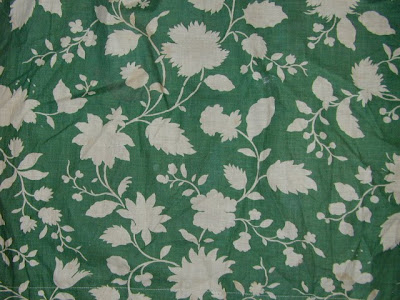The first two swatches are from the latter part of the 19th century. The brown background piece uses flying parrots, butterflies and palm fronds to set the ambiance. The pale background swatch utilizes colors that were favored in the sunny South of France - blue-green and coral. Palm fronds, banana leaves and ferns set the stage for the jaunty cockatiels and flying parakeets.
The love of exotic and tropical birds persisted into the early 20th century, and textile manufacturers were happy to design for the demand. The first piece below uses the formal French classic stripe pattern, but with a twist. The main motif is an exotic bird, perched on a branch of a local plum tree rather than on a tropical plant. The narrower stripe is filled with bunches of French grapes.
The middle swatch below is seemingly a glimpse into a winter garden, and includes parrots on peony bushes, mixing local plants with tropical birds. The last swatch has a similar mixture of local and exotic, combining parrots with roses and peonies, in a stylized rendering that looks like a painting.




















